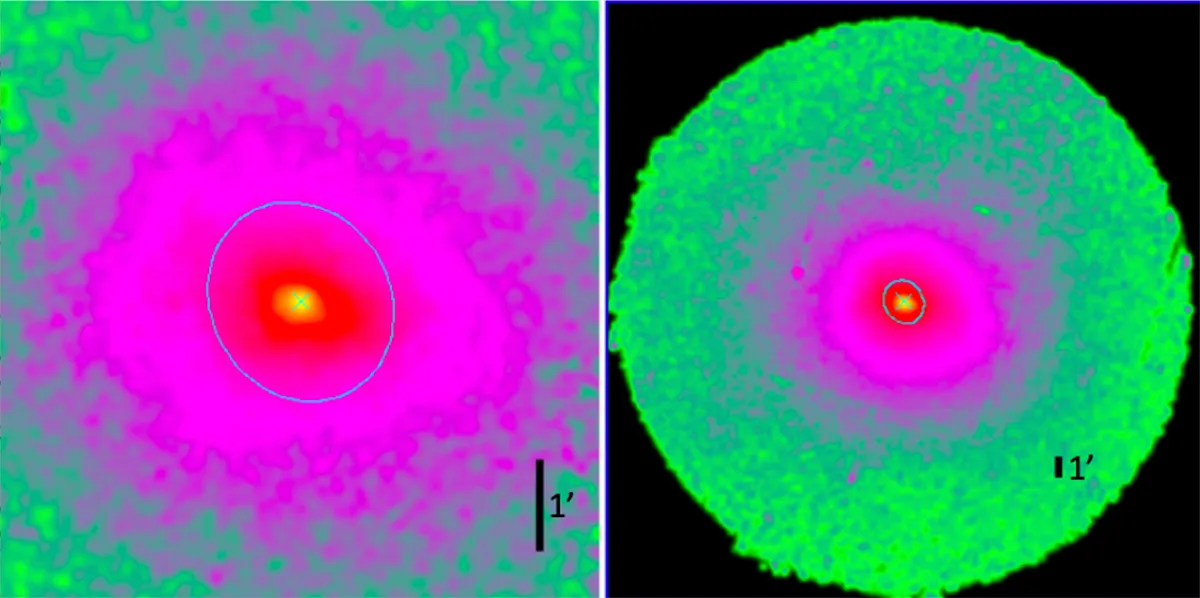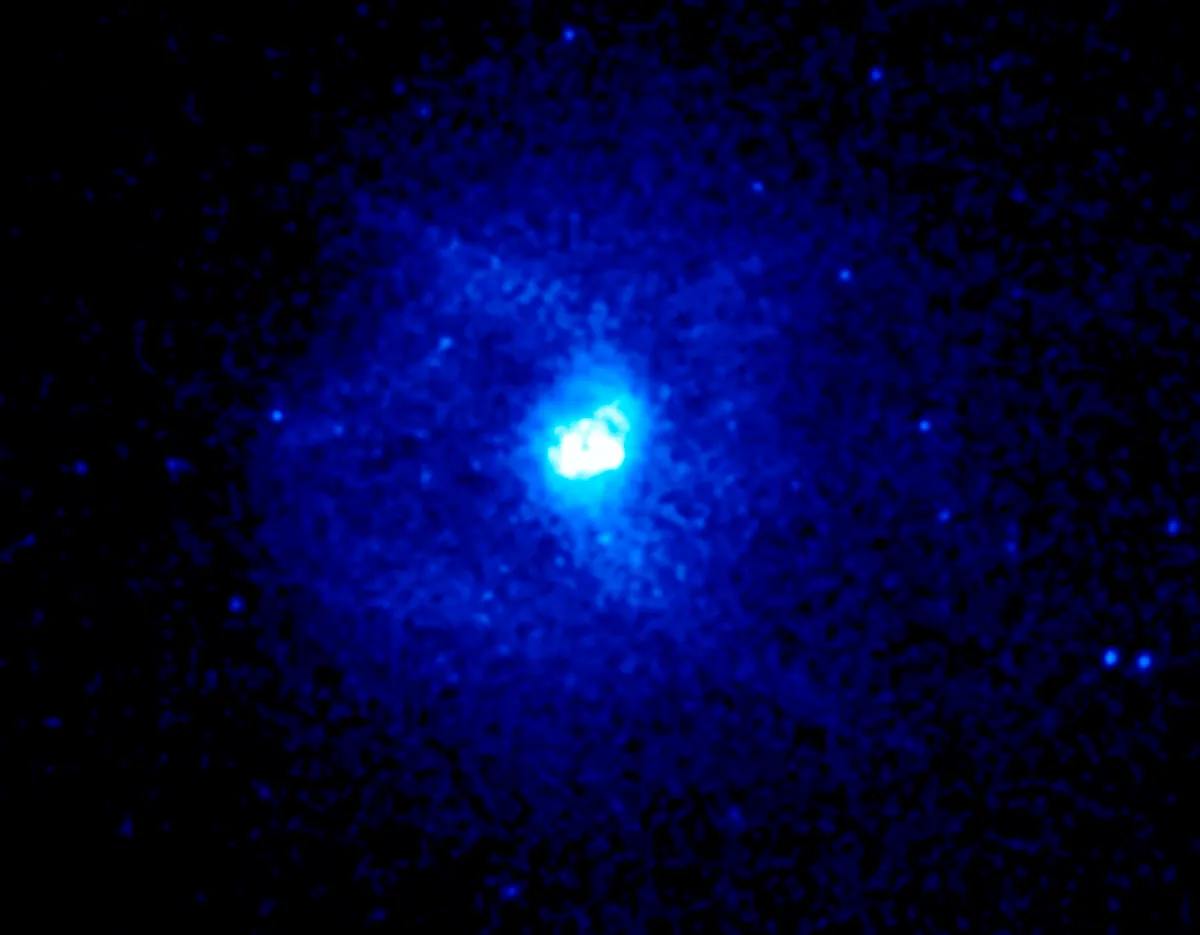Most elliptical galaxies aren’t much to look at, not much more than a rounded ball of stars.
Wide-field images of the Virgo Cluster, a nearby home for many ellipticals, add interest by showing the sheer number of systems, but each individually is, well, pretty dull.
This is, of course, appalling bias, typical of a species from a spiral galaxy that happens to see with eyes sensitive only to wavelengths that cover 4,000 to 7,000 Ångstroms.
More from Chris Lintott:

Look at these systems with X-ray eyes – or, as Harvard’s Nazma Islam and colleagues do, rummage through the archives of the XMM-Newton space telescope – and they look different, with dramatic jets and hot gas swirling around the brightly glowing black holes at their centres.
The team has assembled an atlas of such observations (there is a long-standing astronomical tradition of using ‘atlas’ to mean not a book of maps, but a collection of images).
The galaxies included have already featured in a similar collection of observations with NASA’s Chandra X-ray Observatory, but XMM is a larger telescope, operating at slightly shorter wavelengths, and Chandra has a smaller field of view than its European counterpart.
While the Chandra observations told astronomers a lot about what was happening to the galaxy itself, a broader perspective is needed to understand how the systems interact with their surroundings.
As hot gas expelled from galaxies can alter the environment of neighbouring galaxies, or even affect them directly, this is important.

Take NGC 1550, for example. The Chandra image shows a nice, smooth halo of hot gas throughout most of the galaxy, but XMM confirms the presence of a bar-like feature at the galaxy’s nucleus, aligned roughly east to west.
From observations of the galaxy’s spectrum, we can tell this east to west feature is formed of cooler gas, and it seems to line up with jets that others have seen in radio observation.
The jets come from activity associated with the galaxy’s central supermassive black hole, and they appear to have captured cooler gas associated with stars in the inner regions of the system, carrying it out into the galaxy.
The other galaxy considered in detail, NGC 4636, shows what can happen when these processes happen on a large scale.

Here, gas is being expelled from the galaxy altogether, shocking material in the intergalactic medium and heating it up so it glows brightly in the XMM image.
The observations also reveal the metallicity of the gas – the proportion of elements heavier than hydrogen and helium, which, as they are produced by previous generation of stars, provide a guide to how processed by star formation the gas has been.
Each of the other 36 galaxies will have their own stories to tell.

This kind of work in the archives, which reflects a huge amount of effort to reprocess and display archived data in a uniform and useful fashion, doesn’t always get enough attention.
But catalogues like these are the raw materials for future science – and it’s also sometimes just fun to look at pictures of galaxies, especially when you pick the right wavelength.
Chris Lintott was reading An XMM-Newton Early-type Galaxy Atlasby Nazma Islam et al. Read it online at arxiv.org.
This article originally appeared in the September 2021 issue of BBC Sky at Night Magazine.
